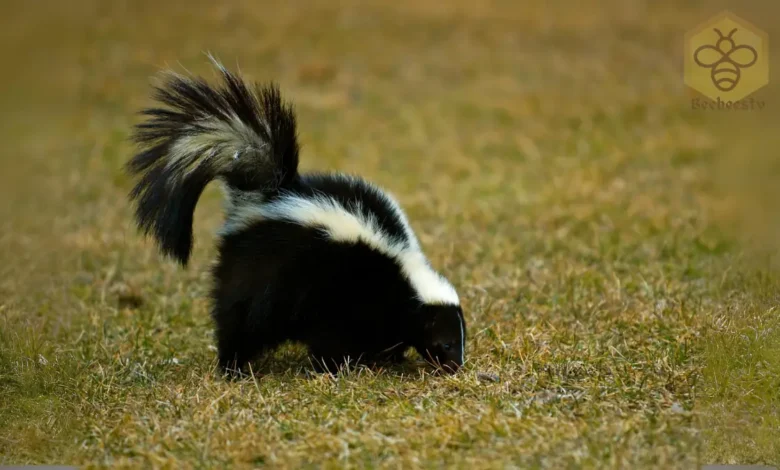Zorillas: The Striped Skunk of Africa

Zorilla: The Striped Skunk of Africa
Zorilla
The zorilla, often known as the striped skunk, is a fascinating creature that captures the attention of wildlife enthusiasts and researchers alike. This small carnivorous mammal, native to Africa, is famous for its striking appearance and potent defense mechanism. While they may resemble skunks, zorillas are unique in their characteristics, behaviors, and ecological roles.
Scientific Overview
Scientific Name
The scientific name of the zorilla is Ictonyx striatus.
Common Name
The common name for Ictonyx striatus is the zorilla or striped skunk.
Scientific Classification
| Kingdom | Animalia |
| Phylum | Chordata |
| Class | Mammalia |
| Order | Carnivora |
| Family | Mustelidae |
| Genus | Ictonyx |
| Species | Ictonyx striatus |
Types
There are two recognized subspecies of zorilla:
- Common Zorilla (Ictonyx striatus striatus)
- Eastern Zorilla (Ictonyx striatus pallida)
Habitat and Distribution
Habitat
Zorillas thrive in various habitats, including savannas, grasslands, and scrublands. They prefer areas with plenty of cover, such as bushes and tall grasses, which provide shelter and hunting grounds.
Geographic Distribution
The zorilla is primarily found in sub-Saharan Africa. Its range extends from Senegal in the west to Ethiopia in the east and south to South Africa, making it a versatile inhabitant of diverse landscapes across the continent.
Physical Characteristics
Size and Weight
Zorillas are relatively small animals, with adults typically weighing between 5 to 10 pounds (2 to 4.5 kg). They measure about 18 to 24 inches (45 to 60 cm) in length, excluding their bushy tails, which can add another 12 inches (30 cm).
Appearance
Zorillas have a striking appearance, characterized by their long, slender bodies and distinctive black and white fur. Their fur is predominantly black with bold white stripes running along their backs and tails, resembling a skunk. Their large, expressive eyes and pointed snouts enhance their alertness, making them adept hunters.
Diet and Feeding Habits
Diet
They are carnivorous and have a varied diet consisting mainly of insects, small mammals, birds, and reptiles. They are particularly fond of termites and will actively dig into termite mounds to access their preferred food sources.
Feeding Behavior
These agile foragers often hunt at night, employing their keen sense of smell to locate prey. Zorillas are known for their digging abilities, using their sharp claws to uncover hidden insects and small animals. Their diet can vary depending on the availability of food in their habitat.
Predators and Threats
Natural Predators
Zorillas are not at the top of the food chain and face threats from larger predators, including eagles, jackals, and large snakes. However, their potent spray can deter many potential threats, allowing them to escape dangerous situations.
Human Threats
Human activities pose significant threats to zorillas. Habitat loss due to agricultural expansion, urban development, and deforestation can reduce their living spaces. Additionally, hunting and poaching for their fur can further impact their populations.
Reproduction, Babies, and Lifespan
Mating Behavior
They are solitary animals, but they come together during the mating season. Mating typically occurs in late summer or early autumn. After a gestation period of about 9 weeks, females give birth to a litter of 2 to 4 kits.
Babies
Zorilla kits are born blind and helpless, relying entirely on their mother for nourishment and protection. They begin to open their eyes at about two weeks and start venturing outside the den at around 4 to 5 weeks.
Lifespan
In the wild, zorillas can live up to 5 to 7 years, while those in captivity may reach up to 10 years due to better living conditions and healthcare.
Population and Conservation Status
Population Size
The exact population size of zorillas is difficult to determine due to their elusive nature and widespread distribution. However, they are considered relatively common in many parts of their range.
Conservation Status
Currently, zorillas are classified as Least Concern by the IUCN Red List. However, continuous monitoring of their populations is necessary due to habitat destruction and other potential threats.
Behavior and Lifestyle
Daily Activities
Zorillas are primarily nocturnal and spend their nights foraging for food. They are known for their solitary behavior, although they may share their habitat with others during the breeding season.
Communication
Zorillas communicate using a variety of vocalizations, body language, and their infamous defensive spray. The spray, which has a strong odor, is a powerful deterrent against predators and is released when the zorilla feels threatened.
Ecological Role
Importance in the Ecosystem
As insectivores, zorillas play a vital role in controlling insect populations, particularly termites. By keeping these populations in check, they contribute to the overall health of their ecosystems.
Impact on Humans
Zorillas indirectly benefit agricultural practices by controlling pest populations. However, their presence may sometimes be seen as a nuisance, especially if they raid poultry coops or gardens.
FAQs About Zorillas
- Are zorillas related to skunks?
While they share a similar appearance, zorillas are more closely related to weasels and otters than skunks. - How do zorillas defend themselves?
They can spray a foul-smelling liquid from their anal glands to deter predators. - What do zorillas eat?
Zorillas primarily eat insects, small mammals, and birds, with a particular preference for termites. - Where do Zorillas live?
They are found in sub-Saharan Africa, inhabiting savannas, grasslands, and scrublands. - How long do zorillas live?
In the wild, zorillas typically live 5 to 7 years, while those in captivity may live up to 10 years.
Conclusion
The zorilla is a unique and fascinating animal that plays an important role in its ecosystem. Known for its striking appearance and defensive behavior, this small carnivorous mammal captivates those who encounter it. Despite facing threats from habitat loss and human activities, zorillas remain resilient and continue to thrive in various African environments. Understanding and appreciating the zorilla’s ecological role can help promote conservation efforts and ensure the survival of this remarkable species for generations to come.


